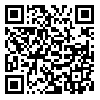Abstract: (55 Views)
Introduction: With the outbreak of the COVID-19 virus, the responsible institutions for combating it provided information about the coronavirus pandemic. Different media highlighted specific aspects of this phenomenon and shaped public opinion around certain topics. The aim of this research is to identify the frameworks of infographics produced on the COVID-19 pandemic by the World Health Organization as the main body responsible for controlling the coronavirus at the international level, the Ministry of Health, Treatment, and Medical Education as the responsible body for combating the coronavirus at the national level, and IRNA as the official news agency of the Islamic Republic of Iran.
Method: In this study, all infographics produced by the three mentioned institutions were extracted. Then, based on purposeful non-random sampling using the thematic analysis method, 190 infographics were coded.
findings: The results showed that internal institutions, in framing the coronavirus pandemic, focused more on the physical health dimension and ignored a wide range of the risks of this pandemic, while the World Health Organization paid attention to other dimensions of this pandemic such as mental health frameworks, social health, not stigmatization of others, increased violence in the home environment and health heroes.
Discussion: If the Iranian audience does not receive some of the necessary information in the face of crisis, in today's multimedia world, they will go to other sources and media such as cyberspace and personal pages of doctors, which in some cases may lack credibility and authenticity. The result of this situation, is losing the audience of internal media and may lead to obtaining incorrect information, infodemics, and consequently, the formation of incorrect mental images in the audience's mind about the disease, increased anxiety due to obtaining incorrect information, and consequently, the audience's confusion; perceptions that will not be easily corrected and improved.
Method: In this study, all infographics produced by the three mentioned institutions were extracted. Then, based on purposeful non-random sampling using the thematic analysis method, 190 infographics were coded.
findings: The results showed that internal institutions, in framing the coronavirus pandemic, focused more on the physical health dimension and ignored a wide range of the risks of this pandemic, while the World Health Organization paid attention to other dimensions of this pandemic such as mental health frameworks, social health, not stigmatization of others, increased violence in the home environment and health heroes.
Discussion: If the Iranian audience does not receive some of the necessary information in the face of crisis, in today's multimedia world, they will go to other sources and media such as cyberspace and personal pages of doctors, which in some cases may lack credibility and authenticity. The result of this situation, is losing the audience of internal media and may lead to obtaining incorrect information, infodemics, and consequently, the formation of incorrect mental images in the audience's mind about the disease, increased anxiety due to obtaining incorrect information, and consequently, the audience's confusion; perceptions that will not be easily corrected and improved.
Article number: 1
Type of Study: orginal |
Received: 2024/08/6 | Accepted: 2025/03/12
Received: 2024/08/6 | Accepted: 2025/03/12
Send email to the article author
| Rights and permissions | |
 |
This work is licensed under a Creative Commons Attribution-NonCommercial 4.0 International License. |



